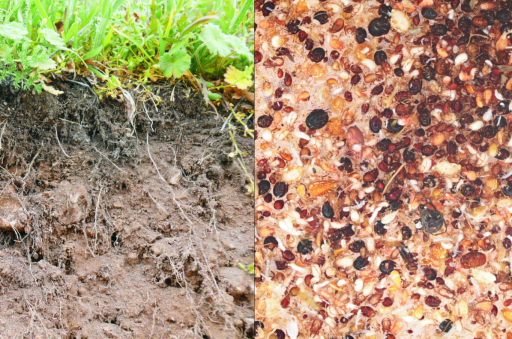Biodiversity hotspots beneath our feet: soil arthropod communities have high levels of endemicity and their dispersal is severely limited
The paper "The limited spatial scale of dispersal in soil arthropods revealed with whole-community haplotype-level metabarcoding", published in the journal Molecular Ecology and highlighted in its From the cover section, is one of the latest publications by the Island Ecology and Evolution Group about the processes that generate biological diversity in soils.
Soils are one of the terrestrial ecosystems least known to humans. For this reason, they are considered, along with other hyper diverse and inaccessible systems such as oceanic trenches or the tropical forest canopy, the last biotic frontiers. Such a situation means that knowledge of how terrestrial biodiversity is distributed - and the processes that generate and destroy it - is mainly based on its surface component but largely ignores soil biodiversity. The study of soil biodiversity has advanced greatly in recent decades thanks to the advance of high-performance sequencing techniques, which began to be applied to characterise soil bacteria and fungi. Only in recent years have these techniques been adapted and applied to the analysis of other macroscopic but tiny components of soils: the edaphic fauna. A single square metre of soil can contain, in its first centimetres, tens of thousands of mites, springtails and beetles. The richness, structure and processes that generate this edaphic diversity are largely unknown.
In one of their latest papers, the IPNA-CSIC Island Ecology and Evolution Group apply innovative molecular techniques and bioinformatic tools, developed by the group, to study the scale at which dispersion limitations are a significant factor in determining the distribution and spatial structure of soil fauna. The soil communities of three regions in the south of the Iberian Peninsula were characterised at the level of intraspecific genetic variation, number of species and number of large lineages and were analysed in a multi-hierarchical framework. The results show high levels of geographical structure and endemicity at very small geographical scales, below the kilometre level within all the regions studied. These patterns, reproduced at multiple levels of organization, are consistent with the fact that much of the soil fauna is scarcely dispersed over very short distances and has diversified locally over long periods of time. If this process is a constant in other biogeographical regions, it could imply that there is an overwhelming wealth of soil fauna species at a global level, thus rendering the current estimates of species on our planet totally outdated and underestimated.
To learn more, check the article here: "The limited spatial scale of dispersal in soil arthropods revealed with whole-community haplotype-level metabarcoding".
By Paula Arribas.
